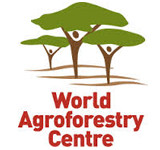
Vigyan Bhavan & Kempinski Ambience
10 - 14 February 2014
Delhi, India
blog
In the recent past Malawi has attracted global attention following huge gains in maize yields that were supported by the introduction of a fertilizer subsidy program in 2005. Now, a new study shows that integrating particular species of nitrogen-fixing trees in maize fields can raise the staple crop’s yield by up to 14 percent, comparable to the gains farmers obtain using subsidized fertilizers.
Viola Glenn from the Research Triangle Institute International in the USA and co-researchers will present these new findings at the World Congress on Agroforestry. They say these results mean that this agroforestry system could sustainably replace the ongoing Farm Input Subsidy Program in the country in case its financing ceases.
According to Glenn and her team, the agronomic and political stability of the fertilizer subsidy program are increasingly being called into question, as Malawi faces recurrent weather-related crop losses of late. They note that similar a program has been discontinued in Zambia due to the financial strain on government funds.
“Agroforestry offers an alternative method to improve crop yields and resilience to climate and weather at a relatively minimal cost,” Glenn and her team say in an abstract to the Congress titled ‘Revitalizing African agriculture from the ground up: A case study of soil fertility, fertilizer subsidy and agroforestry.’
The researchers collected data in a household survey of 390 farms in Malawi to assess the impact of the ‘fertilizer tree’ species Faidherbia albida on maize yield, and found an increase of 12 to 14 percent (169–201 kg) per hectare. Though lower than the yield increases recorded in experimental settings, this gain was greater than or equivalent to that recorded using fertilizer purchased under the subsidy program.
However, the scientists point out that farmers’ adoption of agroforestry in Malawi has been slower than their uptake of the fertilizer subsidies. One of the reasons for this, according to the researchers, is that agroforestry implementation can be expected to increase on-farm labor demand by 11 to 14 percent around the time of tree establishment. (However, maintaining well established agroforestry farms requires additional labour of just around one percent.)
During the survey, a ranking exercise identified ‘system flexibility’ and ‘compatibility with existing systems’ as the most important decision criteria in agroforestry adoption. The researchers therefore recommend that efforts to expand the use of this agroforestry system focus on these two areas, rather than focusing mainly on economic profitability.
Separate long-term studies by World Agroforestry Centre (ICRAF) and partners has shown the ability of fertilizer trees to not only raise maize yields, but also stabilize them over time. Overall, is a growing body of evidence that incorporating trees into agricultural landscapes is part of the solution to meeting the challenge of climate change.
By Isaiah Esipisu
Related links:
- Agroforestry for food nutrition security in Africa
- Trees and food security in Africa; what’s the link?
- Farming Trees, Banishing Hunger: How an agroforestry programme is helping smallholders in Malawi to grow more food and improve their livelihoods [PDF Download]







2 People have left comments on this post
It is more the saving the subsidy.
It keeps soil in good condition in the long run, because natural mulching will help growth of micro-organisms whereas chemical fertilizer kills that.
Intensification is necessary to increase yield, but we should not adopt unsustainable intensification pathways. When nature can help us achieve our goal, why do we need to strive forcing ourselves to get outputs at all cost. We believe that a decent equilibrium can be found between human and environment, and achieve food security at the same time.